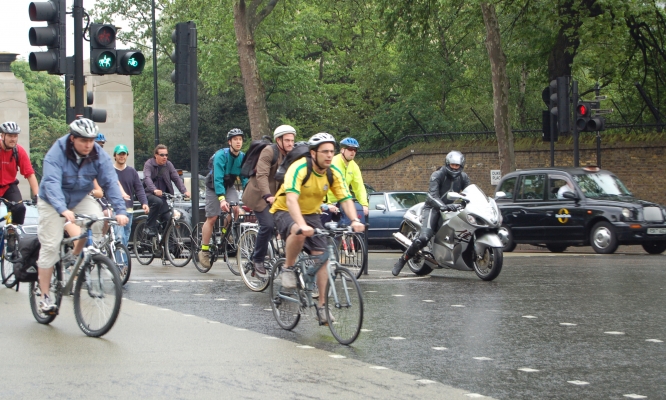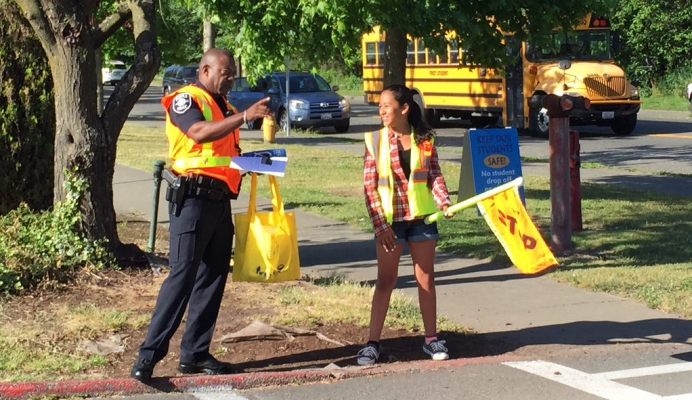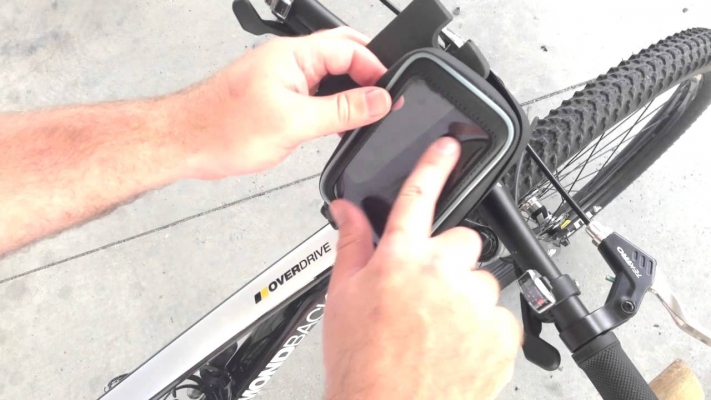The video begins at 4:32.
The video begins at 0:39.
View slides
Abstract: The geometric design of our urban arterials and collector streets can provide more room for nonmotorized travelers, make street crossings easier for pedestrians, and help to control traffic speeds, thus reducing pedestrian, bicycle and automobile crashes. In this seminar Mr. LaPlante will show how this can be done within existing rights-of-way and within tight maintenance and construction budgets, thus making better use of taxpayer dollars. The seminar also will address some of the myths about Complete Streets and how we can begin moving forward in making all our street networks complete.
Speaker Bio: John LaPlante is currently Director of Traffic Engineering for T.Y.Lin International, working out of their Chicago office. Prior to joining the firm in 1992, Mr. LaPlante had been with the City of Chicago for 30 years in various transportation engineering positions, including Chief City Traffic Engineer and Acting Commissioner of the new Department of Transportation. He has been involved in several national committees (PROWAAC, AASHTO Green Book Technical Committee, NCUTCD Pedestrian Task Force, and the TRB Pedestrian Committee) and was principal author of the AASHTO Pedestrian Guide. He has taught many courses as part of the...
Read moreView slides
Watch video:
Some researchers have tried to categorize cyclists’ levels of traffic stress utilizing facility or traffic data that can be readily measured in the field, such as motorized travel lanes, travel speeds, and type of bicycle infrastructure.
This seminar will present data and modeling results utilizing two novel data sources:
(a) real-world, on-road measurements of physiological stress as cyclists...
Read moreWatch video
Abstract: Traffic safety engineering continues to rely on the traditional methods of design and operational guidelines, correlated to post-crash outcomes, in an attempt to understand the safety attributes of our roadway system. The recently published Highway Safety Manual provides the newest source of methodologies and statistical models that can be applied to help predict or modify safety outcomes. Additionally, Road Safety Audits are a commonly used practice to gain the insight and experience of traffic and safety experts in an effort to avoid or solve a perplexing and/or unexpected safety problem. Although none of these activities are completely void of human factors considerations, the ability to directly consider driver behavior, driver comprehension, and the impact of driver decision making in the analysis is incredibly complex and often omitted. The use of full-scale driving simulators as a research and analysis tool may help significantly reduce the complexity of human factors-based consideration in the context of safety analyses and provide a new and effective tool to improve the safety of our roadway system. This lecture will consider several safety issues facing transportation agencies, namely median crossover crashes, permissive left-turn crashes, and roundabout safety, presenting thoughts and findings on related research. Additionally, this lecture will integrate the attributes...
Read moreConceptual and Embedded Transportation Engineering Knowledge:
Student, Practitioner, and Faculty Context and Understanding of Sight Distance and Stopping Sight Distance
The video begins at 0:30.
Watch video:
Many cities are considering pursuing Vision Zero to eliminate traffic deaths, but may not know how to move beyond addressing past crash locations toward preventing future crashes. Systemic analysis, which looks at crash patterns to determine common characteristics associated with various types of crashes, shows promise in helping cities to identify problematic locations and...
Read moreThe video begins at 1:39.
View slides
Ronald Tamse is a traffic engineer for the city of Utrecht, The Netherlands. Ronald has been involved in traffic design in Amsterdam and Utrecht. He is most interested in bicycle and rail transportation. He has worked on the design of the Amsterdam subway, a light rail system in Utrecht, and is currently working on urban transportation solutions as Utrecht Centraal is redeveloped. Utrecht Centraal is the largest train station in The Netherlands.
Ronald will highlight key examples from Utrecht that show some new ideas, similarities between the Dutch and American approaches, as well as a few lessons imported from Portland. These examples will share highlights from major projects that include building a new commuter railway network, including the rebuilding of Utrecht Centraal railway station, and the development of a light rail line in Utrecht that uses MAX as a development model. In addition, Ronald will demonstrate the importance of connecting bike infrastructure through network planning, infrastructure, and connections to transit.
Watch video
View slides
ORcycle is a new smartphone application (for both Android and iOS) developed by Transportation, Technology, and People (TTP) lab researchers at Portland State University as part of an Oregon Department of Transportation (ODOT) research project. ORcycle collects user, route, infrastructure, crash, and safety data. ORcycle was successfully launched in early November 2014 and presents many improvements over existing or similar apps. Initial data findings and insights will be presented. Lessons learned as well as opportunities and challenges associated with smartphone data collection methods will be discussed. More information about the app can be found here: http://www.pdx.edu/transportation-lab/orcycle
Read more


